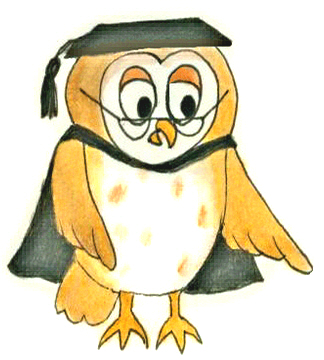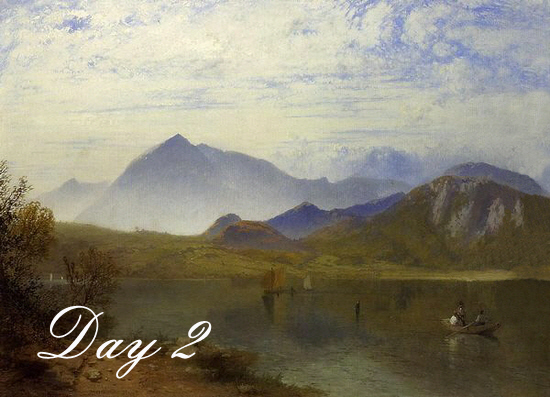Return to: Home > Creative Vision Tours > Great Lakelanders > < Day 1 ….. Day 3 >
We start the day on a nature ramble around Tarn How and Tom Gill Falls which is one of the most picturesque parts of the Lake District. Our walk will involve a complete circuit of this small lake (Tarn) set on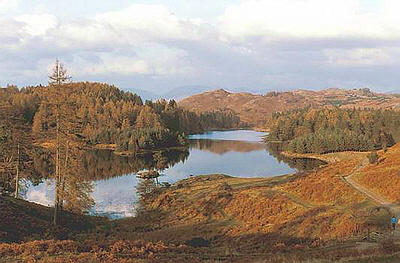 a hill and take in the sight of the spectacular mountain scenery which forms a dramatic backdrop all around, which makes this beauty spot so remarkable. Its picturesque quality was certainly not lost on the author Beatrix Potter who purchased the tarn and adjoining lands in 1929 and later gifted it to the National Trust for its continued preservation.
a hill and take in the sight of the spectacular mountain scenery which forms a dramatic backdrop all around, which makes this beauty spot so remarkable. Its picturesque quality was certainly not lost on the author Beatrix Potter who purchased the tarn and adjoining lands in 1929 and later gifted it to the National Trust for its continued preservation.
Later in the morning we will visit Coniston Water, which at 5 miles in length is the third largest lake in the Lake District. The lake has three small islands one of which is known as ‘Wild Cat Island’ which featured in the author Arthur Ransome’s famous book ‘Swallows and Amazons’ which was later made into the children’s film of the same name. 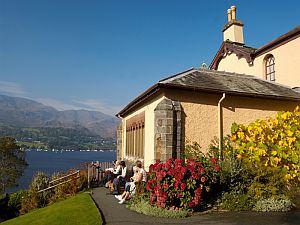 Coniston’s most famous literary connection however is with the art critic, writer, poet and artist John Ruskin who lived at Brantwood on the eastern shore of the lake. Although known primarily as being art critic in his day, John Ruskin was extremely gifted in many different fields of creativity from art, poetry, writing and prose. His literary output was enormous and he had a significant influence on the formation of the Arts and Crafts movement. However as a critic that Ruskin first came to widespread attention in Victorian England, for his very public defence of the work of the landscape painter J. M. W. Turner and his defense of natural expression in art which later manifested itself in supporting the Pre-Raphaelite movement.
Coniston’s most famous literary connection however is with the art critic, writer, poet and artist John Ruskin who lived at Brantwood on the eastern shore of the lake. Although known primarily as being art critic in his day, John Ruskin was extremely gifted in many different fields of creativity from art, poetry, writing and prose. His literary output was enormous and he had a significant influence on the formation of the Arts and Crafts movement. However as a critic that Ruskin first came to widespread attention in Victorian England, for his very public defence of the work of the landscape painter J. M. W. Turner and his defense of natural expression in art which later manifested itself in supporting the Pre-Raphaelite movement.
Ruskin firmly believed that art should communicate an understanding of nature, and that authentic artists should reject inherited conventions, and 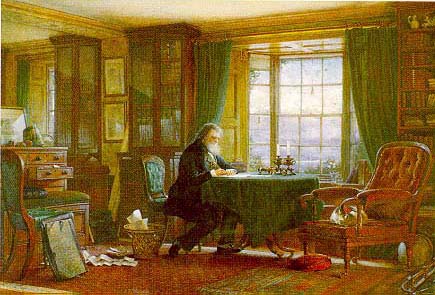 study and appreciate effects of form and colour by direct observation in nature. Edward Burne-Jones and William Morris both drew inspiration from the writings of John Ruskin, and decided they wanted to become artists. This respect was mutual, as Ruskin saw the work of Rossetti and the Pre-Raphaelite Brotherhood as ‘the dawn of a new era of art’. He became a great friend of Rossetti, Burne-Jones and Millais, who later married Ruskin’s wife Effie. His later writings turned increasingly to complex and personal explorations of the interconnection of cultural, social and moral issues, and were influential on the development of the early Christian socialism movement. Ruskin bought Brantwood near Coniston in 1871 transforming the house into the finest country house in the Lake District. Whilst living there he was often visited by many eminent Victorians including Charles Darwin, Holman Hunt, Kate Greenaway and Henry Holiday to name a few.
study and appreciate effects of form and colour by direct observation in nature. Edward Burne-Jones and William Morris both drew inspiration from the writings of John Ruskin, and decided they wanted to become artists. This respect was mutual, as Ruskin saw the work of Rossetti and the Pre-Raphaelite Brotherhood as ‘the dawn of a new era of art’. He became a great friend of Rossetti, Burne-Jones and Millais, who later married Ruskin’s wife Effie. His later writings turned increasingly to complex and personal explorations of the interconnection of cultural, social and moral issues, and were influential on the development of the early Christian socialism movement. Ruskin bought Brantwood near Coniston in 1871 transforming the house into the finest country house in the Lake District. Whilst living there he was often visited by many eminent Victorians including Charles Darwin, Holman Hunt, Kate Greenaway and Henry Holiday to name a few.
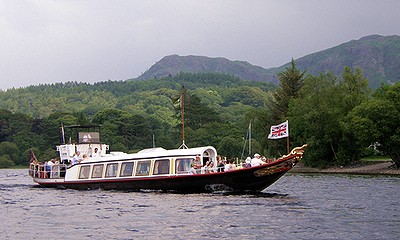 Today Brantwood is open to the public and is special for containing so many of Ruskin’s original paintings, fixtures and personal possessions. The property also includes a 250 acre woodland estate to explore with spectacular views over Coniston Water. We will have an enjoyable stroll around it’s gardens and house until we depart on a Victorian steam boat from the property around the lake before returning to lunch at the nearby village of Coniston. The village of Coniston lies at the northern end of Coniston Water; the village comprise many interesting stone buildings built as the village rapidly expanded in the 18th and 19th Century as the consequence of prosperity brought by copper mining within the area.
Today Brantwood is open to the public and is special for containing so many of Ruskin’s original paintings, fixtures and personal possessions. The property also includes a 250 acre woodland estate to explore with spectacular views over Coniston Water. We will have an enjoyable stroll around it’s gardens and house until we depart on a Victorian steam boat from the property around the lake before returning to lunch at the nearby village of Coniston. The village of Coniston lies at the northern end of Coniston Water; the village comprise many interesting stone buildings built as the village rapidly expanded in the 18th and 19th Century as the consequence of prosperity brought by copper mining within the area.
Later that afternoon we will depart by coach to begin a Victorian journey across South Lakeland starting at the Lakeside & Haverthwaite 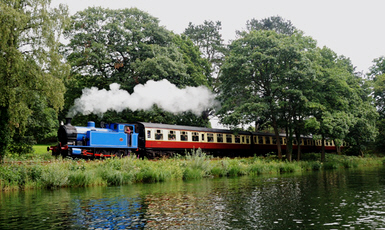 Steam Railway where we will travel by railway coach along a 3 1/2 miles scenic line along the River Leven from Haverthwaite to Pooley Bridge on the shores of Windermere, pulled by fully restored steam locomotive. The journey will then continue by steam boat to travel the full length of the lake to Ambleside, providing a relaxing and classic way to enjoy the views of England’s largest lake.
Steam Railway where we will travel by railway coach along a 3 1/2 miles scenic line along the River Leven from Haverthwaite to Pooley Bridge on the shores of Windermere, pulled by fully restored steam locomotive. The journey will then continue by steam boat to travel the full length of the lake to Ambleside, providing a relaxing and classic way to enjoy the views of England’s largest lake.
Highlights:
- Tarn Hows and Tom Gill Falls – We’ll walk around this small lake and take in the scenery Beatrix Potter would have enjoyed.
- Coniston Water - Third largest lake in the Lake District with 3 small islands.
- Brantwood, interior and gardens - Home of artist, poet and art critic John Ruskin on shore of Coniston.
- Victorian steamboat ride – Around lake Coniston.
- Village of Coniston – at the Northern end of Lake Coniston, with interesting stone buildings from the 18th & 19th c.
- Lakeside & Haverthwaite Steam Railway – 3 1/2 mile scenic ride to Pooley Bridge along the River Leven.
- Pooley Bridge
- Steam Boat – ride the length of Windermere, England’s longest lake, to Ambleside.
